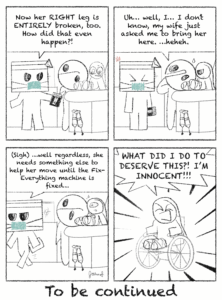The United States Postal Service (USPS) handles 40% of the world’s mail, which generated $67.3 billion in revenue in the past year.
USPS employs approximately 74,000 mail carriers who drive to neighborhoods and deliver mail on foot; approximately 7,600 deliver only on foot. In 2014, USPS reduced energy consumption by 33% from the previous year. Packaging and shipping services brought in $12.5 billion, which was generated not only by the United States, but also by 190 international destinations.
On Wednesday, Feb. 4, post offices nationwide celebrated Thank a Mail Carrier Day, which is dedicated to appreciating the hard work of letter carriers, couriers and all others involved in the mail and packaging industry.
To celebrate, let’s take a look at UR’s Campus Mail Center, located in the basement of Todd Union, and learn about the ins and outs of what goes on within.
Six days a week, the Campus Mail Center is flooded with four separate deliveries of approximately 400 packages each–from USPS, UPS, FedEx and DHL, an international package delivery agent.
During September, the busiest month of the year, up to 600 packages may arrive on each delivery, and numbers expectedly plummet during the summer months.
Amy Mirabella, Supervisor of the Campus Mail Center, explains that “during September, we have a ton of stuff coming in, from books to bigger stuff like refrigerators, futons and other dorm items.” The summers tend to be less busy because there are fewer students on campus to receive packages, although it remains moderately active, as the Mail Center service staff, graduate students, and local Rochester residents still get deliveries.
Campus Mail Center Working Leader Peter Lootens shared that Rochester students seem to be above-average spenders in relation to college students in the rest of the country.
“Nationwide, campus mail centers deliver an average of twelve packages a year per student. However, our Campus Mail Center delivers an average of twenty,” Lootens said.
Package overload has been, and is increasingly becoming more problematic due to the lack of physical space. What used to be a simple post office has been physically expanded to make room for ceiling-high stacks of alphabetically and size- wise sorted packages, delivered to either “floor,” “rack” or “tubes,” depending on size, space and apparent manageability of the package.
To deal with the constant chaos of incoming and outgoing packages and mail, the Campus Mail Center has one part-time and five full-time employees, as well as seven student employees.
Senior Ryan Dickey, a Brain and Cognitive Science and Political Science double major, has been working at the Campus Mail Center since his freshman year.
“As a freshman, I was a mail courier. USPS delivers all of our mail to a sorting facility on Mt. Hope [Ave.], and from there the mail is delivered to the Med Center and different buildings on campus. So, I was responsible for taking it from there and delivering it to the Mail Center.”
Since sophomore year, Dickey has been working to process packages.
Package processing is the crucial foundation to correct package delivery. Once a package is delivered, it must be scanned and labeled, and an email must be sent to its recipient, informing them of the package’s arrival and location.
The Campus Mail Center, open 9 a.m. to 5 p.m. Monday through Friday and 10 a.m. to 2 p.m. Saturdays during the academic year, manages to maximize efficiency in spite of the overload of incoming and outgoing deliveries. Outgoing deliveries, handled at one end of the Package Center, are typically less popular, and enable students to send letters, flat mail, or packages anywhere.
Incoming packages are handled at the other end of the Mail Center, while paper mail is delivered to individual student mailboxes. Commenting on the efficiency of the Mail Center, Mirabella mentioned that typically only one to two packages are lost in an entire semester, while approximately 50,000 packages are received in total.
This past year, the Center received a daily average of 422 packages, amounting to 2,109 packages a week, and mail activity seems to be increasing at a steep rate.
Between Dec. 2014 and Feb. 2015, there was a six percent increase in flat mail received, and an eleven percent increase in packages received. The biggest jump, however, was in letters received, presenting a whopping twenty-five percent increase in just one year.
Whether you make frequent trips to the Campus Mail Center or occasionally drop by, we should all stop to say thanks to our mailmen and women for helping us send and receive our letters and packages, and doing so efficiently and enthusiastically.


